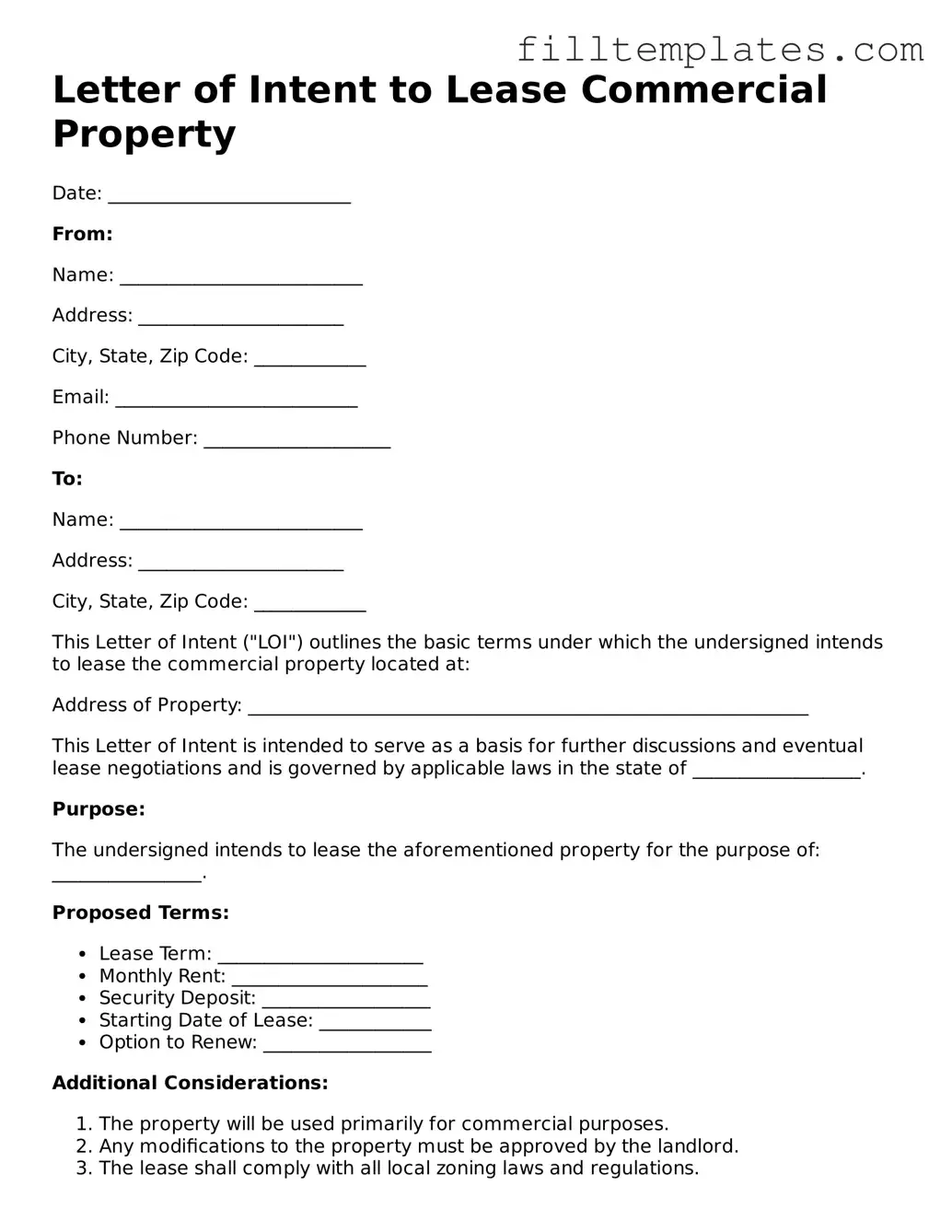Letter of Intent to Lease Commercial Property
Date: __________________________
From:
Name: __________________________
Address: ______________________
City, State, Zip Code: ____________
Email: __________________________
Phone Number: ____________________
To:
Name: __________________________
Address: ______________________
City, State, Zip Code: ____________
This Letter of Intent ("LOI") outlines the basic terms under which the undersigned intends to lease the commercial property located at:
Address of Property: ____________________________________________________________
This Letter of Intent is intended to serve as a basis for further discussions and eventual lease negotiations and is governed by applicable laws in the state of __________________.
Purpose:
The undersigned intends to lease the aforementioned property for the purpose of: ________________.
Proposed Terms:
- Lease Term: ______________________
- Monthly Rent: _____________________
- Security Deposit: __________________
- Starting Date of Lease: ____________
- Option to Renew: __________________
Additional Considerations:
- The property will be used primarily for commercial purposes.
- Any modifications to the property must be approved by the landlord.
- The lease shall comply with all local zoning laws and regulations.
Upon mutual agreement of terms outlined herein, a formal lease agreement will be drafted and executed. The undersigned trusts that this LOI expresses a genuine interest in proceeding with the lease.
Signature:
__________________________
Name: ______________________
Date: ___________________
